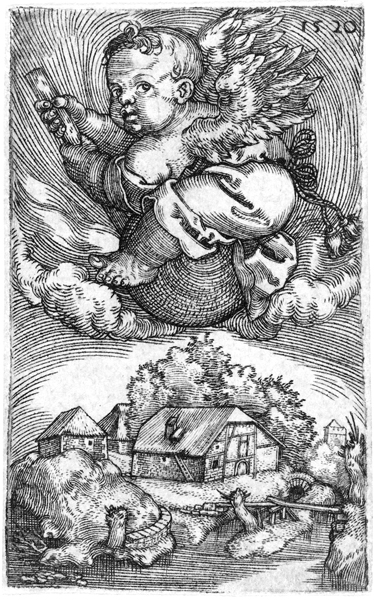Sebald and Barthel Beham
 The brothers Beham: Sebald (1500 Nuremberg - Frankfurt 1550) and Barthel (1502 Nuremberg - Italy 1540).
The brothers Beham: Sebald (1500 Nuremberg - Frankfurt 1550) and Barthel (1502 Nuremberg - Italy 1540).
These volumes of the New Hollstein German will register the appr. 250 engravings, 18 etchings and 1500 woodcuts by Sebald Beham, followed by the 107 engravings and etchings and appr. 30 designs for woodcuts by his younger brother Barthel.
The volume on the graphic oeuvre of Barthel Beham has been published March 2021: https://www.hollstein.com/new_german/barthel-beham.html
The new catalogues raisonné's are based on those by Gustav Pauli, the one on Sebald Beham's prints from 1901 (with additions of 1911), and the one on Barthel's from 1911 (with additions by Röttinger of 1921), both with older literature by Bartsch, Passavant, Aumüller, Loftie etc., and will reflect all the literature which appeared in the following years, including the two old Hollstein volumes of 1954 (vol. II) resp. 1955 (vol. III). Attempts are made to list all different states and also the many copies, done after their works.
Prints by the Beham brothers were highly esteemed already in their lifetimes by bourgeois and aristocratic collectors, and as they were printed in often high (and reworked) editions, they can be found today in many collections, private and public. Due to the many changes in the history of the collections after the first World War, especially the private ones listed already by Pauli, these new Hollstein volumes will try to register as many locations as possible, including the old but not recorded ones in Eastern Europe, and the new ones in the American (and Australian) Print Rooms which could enlarge their holdings considerably and with great connoisseurship and knowledge in the famous sales of the 1920's in Leipzig, Berlin, Bern and many others.
Many of the Beham's woodcuts reach normal, some even big sizes, while most of their engravings and etchings are very small, thus causing the brothers' characterisation as the so-called Little Masters, a group of South German artists like Albrecht Altdorfer, Jacob Bink, Georg Pencz, and - as main actors - the Beham brothers. But despite the diminutive sizes of these prints, their figure and landscape style and their techniques are very elaborate and precise (the few etchings are more experimental, not surprising at this early date), Italianate, elegant and also, of course, Dürerisch (although there was probably no personal workshop connexion). Their work is varied ranging from modern Renaissance subjects (for example Sebald's series of The Labours of Hercules, Pauli 98-109), portraiture (the Habsburg Emperors, Barthel: Pauli 90, 91), ornamental designs of highest fantasy (Sebald: Pauli 228-232), to new genres (Sleeping Child with four Skulls, Barthel: Pauli 36, or peasant festivities, Sebald: Pauli 155-166; Barthel: Pauli/Rött. 3), and traditional religious subjects from the Old and New Testament (Adam and Eve with Death, Sebald: Pauli 7, or The History of the Prodigal Son, Sebald: Pauli 33-36). Their work extends even to anti-papal broadsheets (Luther and workmen disputing, Sebald: Pauli 1197) and other themes of the early Reformation (Illustrations to Luther's Prayer-Book, Sebald: Pauli 675-686). The radical nature of their work (and their unconventional lifestyle) led to their temporary expulsion in 1525 from Nuremberg - along with Georg Pencz -and they were branded the "godless painters".
Compiler: Anne Röver-Kann
Editor: Rainer Schoch

